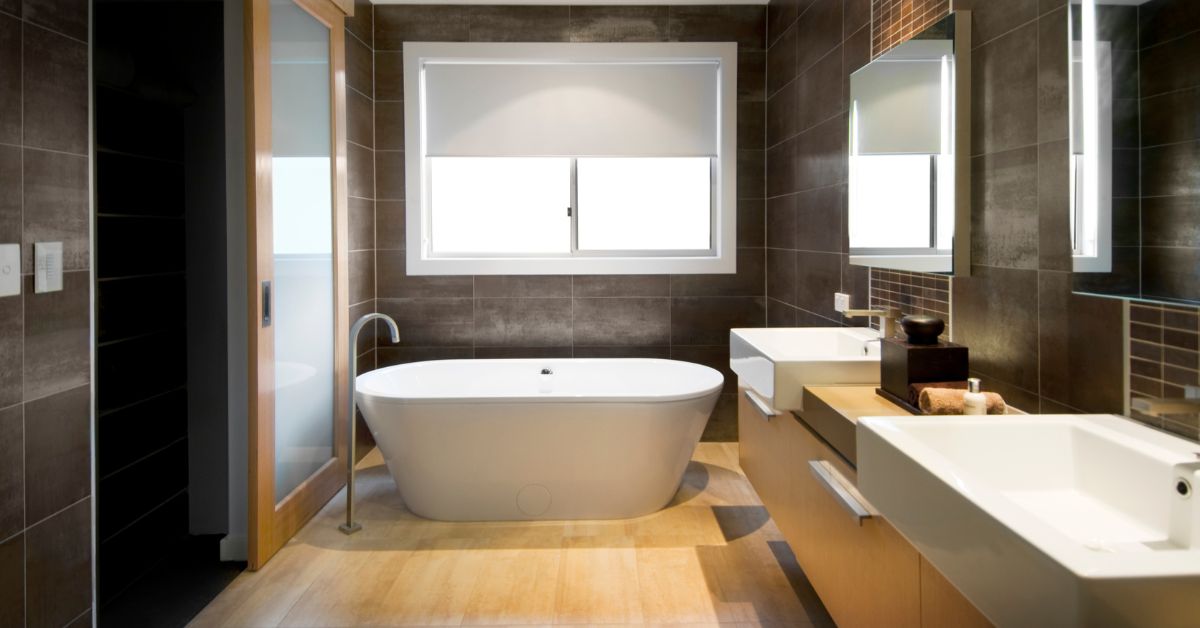Welcome to our blog post, where we will dive into ceilings and explore two popular options: soffit ceilings and traditional ceilings. Whether you’re building a new home or considering a renovation, choosing the right ceiling can significantly impact your space’s overall aesthetics and functionality. But which option is right for you?
Join us as we compare the pros and cons of soffit and traditional ceilings, consider essential factors in making this decision, explore various design options, and even delve into maintenance and cost considerations. By the end of this article, you’ll be armed with all the information you need to find that perfect ceiling solution for your home’s unique needs. So, let’s get started!
Contents
- 1 Understanding Soffit Ceilings and Traditional Ceilings
- 2 Pros and Cons of Soffit Ceilings
- 3 Pros and Cons of Traditional Ceilings
- 4 Factors to Consider When Choosing Between Soffit and Traditional Ceilings.
- 5 Design Options for Soffit and Traditional Ceilings
- 6 Maintenance and Cost Comparison
- 7 Conclusion:
Understanding Soffit Ceilings and Traditional Ceilings
It’s essential to grasp the fundamental differences between the two when understanding soffit and traditional ceilings. Soffit ceilings are a type of suspended ceiling that is installed below an existing ceiling or roof structure. They typically feature a dropped section that conceals ductwork, wiring, and plumbing, creating a clean and streamlined look.
On the other hand, traditional ceilings refer to the standard overhead construction commonly found in most homes. These ceilings are usually made of drywall or plaster and provide a seamless surface from wall to wall.
One key advantage of soffit ceilings is their versatility. Since they are not attached directly to the structural ceiling, they allow easy access to utilities hidden above them. This makes maintenance and repairs much more straightforward than traditional ceilings, where accessing these components can be more challenging.
Traditional ceilings, however, offer a timeless appeal that suits various architectural styles. They provide a classic look with smooth surfaces that can be painted or adorned with decorative finishes like crown molding or coffered designs.
Regarding installation complexity, soffit ceilings may require professional assistance due to their suspended nature and the need to place supporting structures carefully. Traditional ceilings can often be installed by skilled DIY enthusiasts or general contractors familiar with conventional construction methods.
Both types also have pros and cons when it comes to insulation properties. While soffit systems offer better soundproofing capabilities due to the air gap between layers, traditional drywall constructions can incorporate additional insulation materials for improved thermal efficiency.
Understanding these fundamental differences allows us to explore further considerations when deciding between soffit and traditional ceilings.
Pros and Cons of Soffit Ceilings
- Soffit ceilings, also known as dropped ceilings or suspended ceilings, have become increasingly popular in home design. These ceilings consist of a grid system suspended from the actual ceiling, with individual panels or tiles fitting into the grid.
- One significant advantage of soffit ceilings is their versatility. They allow for easy installation and can be customized to fit any space. They also provide excellent sound insulation and can help reduce noise transfer between rooms.
- Another benefit is the accessibility they offer. Soffit ceilings make accessing electrical wiring, plumbing, or HVAC systems hidden above them simple. This makes maintenance and repairs more convenient than traditional plaster or drywall ceilings.
- On the downside, soffit ceilings may decrease ceiling height slightly due to their lower installation level. For spaces with low clearance already, this could pose an issue. Furthermore, some homeowners may find that soffit ceilings give a room a more industrial or commercial appearance rather than a cozy aesthetic.
- It’s also worth noting that soffit ceiling installations can be more expensive than traditional options like drywall or plasterboard due to the additional materials required to build the grid system.
- If you prioritize flexibility in design choices and ease of maintenance over minor drawbacks like potential height reduction or cost considerations, then soffit ceilings could be an excellent choice for your home!
Pros and Cons of Traditional Ceilings
- Traditional ceilings have been the home’s go-to option for many years, with advantages and disadvantages. One of the primary benefits of conventional ceilings is their versatility. They can be customized to fit any style or design aesthetic, whether it’s a classic look or a more modern feel.
- Another advantage of traditional ceilings is that they are relatively easy to install. You can quickly have a conventional ceiling with the right tools and materials. Additionally, traditional ceilings provide ample space for recessed lighting fixtures or other decorative elements such as chandeliers.
- However, there are also some drawbacks to consider regarding traditional ceilings. One potential downside is that they create a closed-off feeling in smaller spaces. Traditional ceilings can make rooms feel cramped and less open compared to other options like soffit ceilings.
- Another disadvantage of traditional ceilings is maintenance. Due to their height, cleaning and painting them may require additional equipment or professional help, which could add to the cost.
- In terms of cost-effectiveness, traditional ceilings are more affordable upfront than alternatives like coffered or tray ceiling designs. However, remember that factors such as materials used and the complexity of installation may affect overall costs.
- When deciding between soffit and traditional ceilings for your home, consider factors such as room size, desired aesthetic appeal, and maintenance requirements before making your final decision!
Factors to Consider When Choosing Between Soffit and Traditional Ceilings.
When it comes to choosing between soffit ceilings and traditional ceilings for your home, there are several factors you should consider. One crucial factor is the overall style and design of your home. Soffit ceilings can add a modern and sleek look, while traditional ceilings offer a more classic and timeless appeal.
The height of your ceiling is an additional consideration. Soffit ceilings are typically lower than traditional ceilings, making a room feel more cozy and intimate. On the other hand, traditional ceilings can create a sense of grandeur and spaciousness if you have high ceilings.
Budget is also an important consideration. Soffit ceilings are more expensive due to their unique design features, such as recessed lighting or hidden ductwork. Traditional ceilings, on the other hand, are generally more affordable.
Think about maintenance requirements. Due to their exposed beams or decorative elements, soffit ceilings may require regular cleaning or dusting. Traditional ceilings are usually easier to clean since they have smooth surfaces without intricate details.
These factors will help you decide between soffit and traditional for your home renovation or construction project.
Design Options for Soffit and Traditional Ceilings
Regarding the design options for soffit and traditional ceilings, there are plenty of choices to suit your style and home decor. Let’s explore some of these design options below.
For soffit ceilings, you have the flexibility to create unique and modern looks. One popular option is recessed lighting, which can add a sleek and sophisticated touch to your space. You can also opt for different materials, such as wood or metal panels, to give your ceiling a distinct texture.
Traditional ceilings offer their own set of design possibilities. If you prefer a more classic look, crown molding can be added to enhance the elegance of your room. Ceiling medallions are another great option to be a focal point in any space.
Color choice is also important when considering design options for both types of ceilings. With soffit ceilings, you can play with bold colors or even create accent walls on your ceiling. Traditional ceilings often lend themselves well to neutral tones or subtle patterns that complement the overall aesthetic.
Textures are another element that can elevate the design of both soffit and traditional ceilings. From smooth finishes to textured patterns like coffered or tray designs, there are endless possibilities for adding depth and visual interest.
Incorporating architectural details into your ceiling design can further enhance its appeal. Consider adding decorative beams or skylights if you want a more dramatic effect with either type of ceiling.
Choosing between soffit and traditional ceilings depends on personal preference and how each option complements your home’s overall style. Consider factors such as ceiling height, room size, natural light availability, budget constraints, and maintenance requirements before deciding.
Remember that no matter what type of ceiling you choose for your home, it should reflect your taste while creating an inviting atmosphere in every room.
Maintenance and Cost Comparison
Soffit ceilings and traditional ceilings differ in terms of maintenance requirements and costs. When it comes to maintenance, soffit ceilings have the upper hand. These ceilings are typically made from durable materials like vinyl or aluminum, which require minimal upkeep. They are resistant to moisture damage, warping, and cracking, making them ideal for bathrooms or kitchens where humidity levels can be high.
On the other hand, traditional ceilings made of plaster or drywall may require more regular maintenance. They can be prone to cracks and water damage if not properly maintained. Patching up cracks and repainting may become necessary over time.
Regarding cost, soffit ceilings tend to be more expensive upfront due to the specialized materials used in their construction. However, due to their low maintenance requirements, they are often a cost-effective option in the long run.
Traditional ceilings are generally less expensive initially but may require ongoing repairs and touch-ups that could increase overall costs over time.
Your choice will depend on your budget and priorities for maintenance. Consider factors such as durability, longevity, and potential repair expenses when deciding between soffit or traditional ceiling options for your home.
Conclusion:
There is no one-size-fits-all answer when choosing between soffit ceilings and traditional ceilings. Both options have pros and cons, and your decision should ultimately be based on your personal preferences and the specific needs of your home.
Soffit ceilings offer a sleek and modern look that can add a touch of elegance to any space. They are versatile in design options, allowing you to create unique patterns or seamlessly incorporate lighting fixtures. However, they may only be suitable for some rooms due to their lower height constraints.
On the other hand, traditional ceilings provide a timeless appeal that can complement any decor style. They offer more flexibility regarding architectural features like crown molding or ceiling medallions. Traditional ceilings also tend to be more cost-effective compared to soffit ceilings.
When deciding, consider factors such as the overall aesthetic you want for your home, the functionality requirements of each room, and your budget constraints. It’s crucial to consider the benefits and drawbacks before making a choice.
Additionally, keep in mind maintenance needs and costs associated with each type of ceiling. Soffit ceilings may require additional care due to their exposed nature, while traditional ceilings might need occasional repairs or repainting over time.
Finding the perfect ceiling for your home’s needs means balancing style preference, practicality considerations, maintenance requirements, and budget limitations.
Consulting with professionals such as architects or interior designers can also guide you toward making an informed decision tailored to your home’s unique characteristics.
So whether you opt for the contemporary allure of soffit ceilings or prefer the classic charm of traditional ones – rest assured that either choice will enhance the aesthetics of your living spaces!
Remember – there is no wrong choice here; it depends on what speaks most strongly to you!
Latest Posts!



